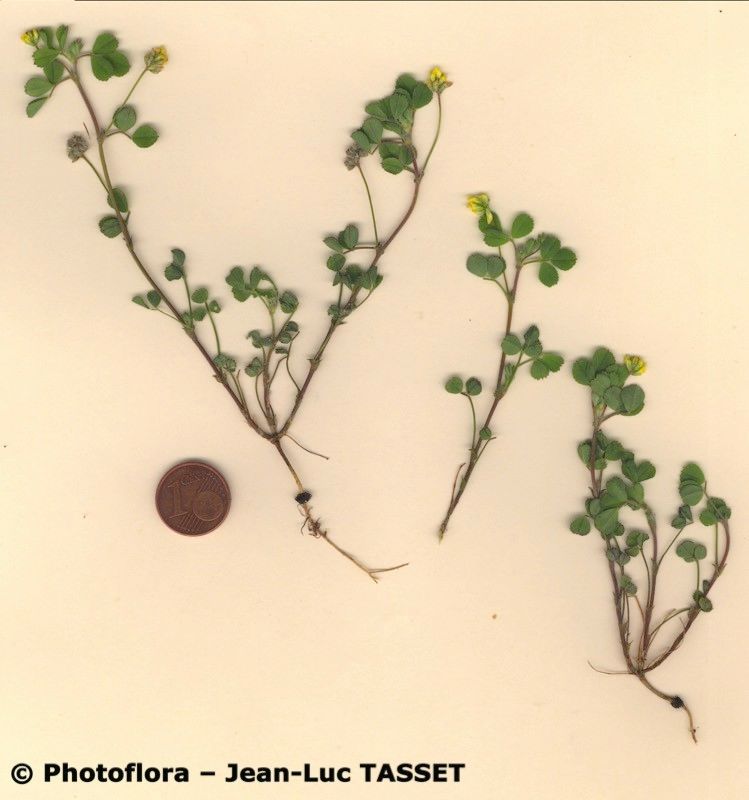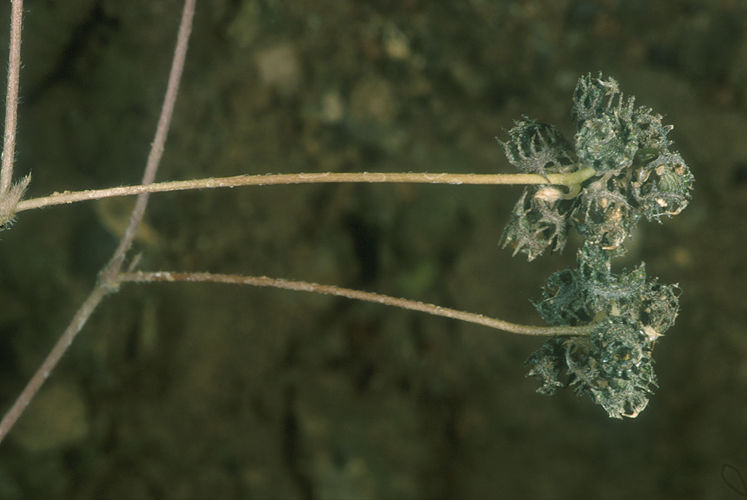Bur Medick
medicago coronata
Also known as: ["Bur Clover","Crowned Medick"]
Overview
A small, annual legume with trifoliate leaves and distinctive bur-like seed pods.
Benefits & Perks
["wildlife attractant (bees, butterflies, birds)","drought tolerant","low maintenance"]
Botanical Classification
| Phylum: | Magnoliophyta |
| Class: | Magnoliopsida |
| Order: | Fabales |
| Family: | Fabaceae |
| Genus: | Medicago |
| Botanical Name: | Medicago coronata |
Plant Characteristics
Basic Information
- Category: Herbs & Weeds
- Suitable Location: outdoor garden bed in a sunny area, or container in a sheltered spot
- Suitable For:
- Is Weed: No
- Allergenicity: low
Environmental Needs
- Climate: {"temperatureRange":"5–35°C"}
- Hardiness: {"zones":"5–9"}
- Misting: rarely required, only if ambient humidity is very low
- Drainage: Fast-draining to prevent waterlogging.
- Soil Type: Well-draining, loamy soil with added organic matter; suitable for Mediterranean climates.
Maintenance Level
- Maintenance Level: low
- Toughness Level: moderate
- Pruning Frequency: Light pruning can be done as needed; major pruning every 2–3 years or after flowering.
- Pruning Intensity: Light to moderate; avoid heavy pruning unless necessary to control size or shape.
Care Details
Ideal Sunlight Coverage:
Full sun to partial shade; 6–8 hours of direct sunlight per day, with some afternoon shade in hot climates.
Sunlight Tolerance Tips:
Acclimate plants gradually to intense sunlight; protect from harsh midday sun; adjust placement based on seasonal light intensity.
Care Requirements
Care Difficulty
easymoderate
Sunlight
full sun to partial shade
Rotate plant for even light exposure; use shade cloth in extreme heat; monitor for sunburn signs.
Watering
every 7–10 days during active growth, reduce in winter
Water thoroughly but infrequently; ensure proper drainage; avoid wetting foliage.
Soil
well-drained, sandy loam with moderate organic content
pH: Slightly acidic to neutral, pH 6.0–7.0.
Avoid heavy clay soils; ensure pots have drainage holes; amend with compost for better texture.
Temperature
Prefers moderate temperatures, 60–75°F (15–24°C); tolerates mild frosts but avoids prolonged cold.
Monitor temperature fluctuations; protect from drafts; adjust care based on seasonal changes.
Fertilizing
every 4–6 weeks during growing season with balanced liquid fertilizer
Apply fertilizer to moist soil to prevent root burn; flush soil occasionally to prevent salt buildup; reduce feeding in dormant periods.
Propagation
Methods
Stem cuttings or division; stem cuttings are more common for home growers.
Step-by-Step Propagation Guide
- Take a 4–6 inch cutting.
- Remove lower leaves.
- Dip in rooting hormone.
- Plant in moist medium.
- Keep humid and warm.
Best Time: Spring or early summer when the plant is actively growing.
Environment
Warm, humid environment with indirect light; maintain temperatures around 70–75°F (21–24°C).
Medium
Well-draining potting mix, such as a mix of peat, perlite, and sand.
Hormone
Rooting hormone is recommended to improve success rates.
Timeline
Roots typically develop in 3–6 weeks; new growth may appear in 2–3 months.
Tools Needed
Pruning shears, rooting hormone, small pots, misting spray bottle.
Quick Tips
Use healthy, non-flowering stems; maintain high humidity; avoid direct sunlight during rooting.
Pruning & Repotting
Pruning Guide
Method
Use clean cuts just above a leaf node or branch junction; remove crossing or crowded stems.
Pruning Plan
Prune to maintain shape, encourage bushier growth, and remove dead or diseased parts.
Tools
Pruning shears, sterilized scissors, gloves.
Checklist
Sterilize tools; prune during dormancy or after flowering; remove dead or damaged parts.
Repotting Guide
Best Season
Spring, before the active growing season begins.
Pot Size
Increase pot size by 1–2 inches in diameter; ensure good drainage holes.
Method
Remove plant gently; trim any circling roots; place in a slightly larger pot with fresh soil; water thoroughly.
Suggestions
Repot every 2–3 years or when roots fill the pot; beneficial for root health and growth.
Checklist
Choose appropriate pot size; prepare fresh soil mix; handle roots carefully; water after repotting.
Advanced Care Tips
Watering Mastery
Watering Checklist
Check soil moisture; water deeply; ensure drainage; avoid wetting leaves.
How to Apply Water Properly
Water at the base of the plant, ensuring moisture reaches the root zone; allow excess water to drain away; water in the morning to reduce evaporation.
Watering Schedule Tips
Water deeply once the top inch of soil is dry; reduce frequency in winter to prevent root rot.
Soil Improvement
Add perlite or sand for drainage; incorporate compost for fertility; ensure aeration with organic matter.
Temperature Stress Management
Signs of Temperature Issues
Wilting, yellowing leaves, stunted growth, or leaf drop in extreme heat or cold.
Cold Stress
Slows growth, may cause leaf discoloration, and can lead to root damage in freezing conditions.
Solution: Provide frost protection in winter; avoid overwatering in cold weather; move potted plants indoors if temperatures drop below 50°F (10°C).
Hot Stress
Leaves may scorch, wilt, or drop; growth may slow due to excessive heat.
Solution: Provide shade during peak heat; increase watering frequency; ensure good air circulation.
Fertilizing Guide
Fertilizing Checklist
Check fertilizer type; dilute properly; apply during active growth; avoid winter feeding.
Fertilizing Method
Use a balanced, water-soluble fertilizer diluted to half strength; fertilize every 4–6 weeks during the growing season (spring to early fall); avoid fertilizing in winter.
Common Problems & Solutions
Toxicity Warning
Cats
Non-toxicMedicago coronata is not known to be toxic to cats. It does not pose a significant risk if ingested or handled by felines.
⚡ Toxic If:
not applicable
Dogs
Non-toxicMedicago coronata is not known to be toxic to dogs. It does not pose a significant risk if ingested or handled by canines.
⚡ Toxic If:
not applicable
Humans
Non-toxicMedicago coronata is not known to exhibit toxic properties to humans. It is generally considered safe for consumption and handling.
⚡ Toxic If:
not applicable
Frequently Asked Questions
Q: Is Medicago coronata edible?
A: While not commonly consumed, it is non-toxic and could potentially be used as forage or in salads.
Q: Does this plant attract pollinators?
A: Yes, it is known to attract bees and butterflies due to its flowers.
Q: How does Medicago coronata grow?
A: It is an annual plant that prefers full sun and well-drained soil, often found in meadows and disturbed areas.
Quick Reference
| Family: | Fabaceae |
| Care: | easy |
| Light: | full sun to partial shade |
| Water: | every 7–10 days during activ |
Get Expert Care Tips
Download the Plantious app for personalized care reminders and plant identification!
Google Play App Store






